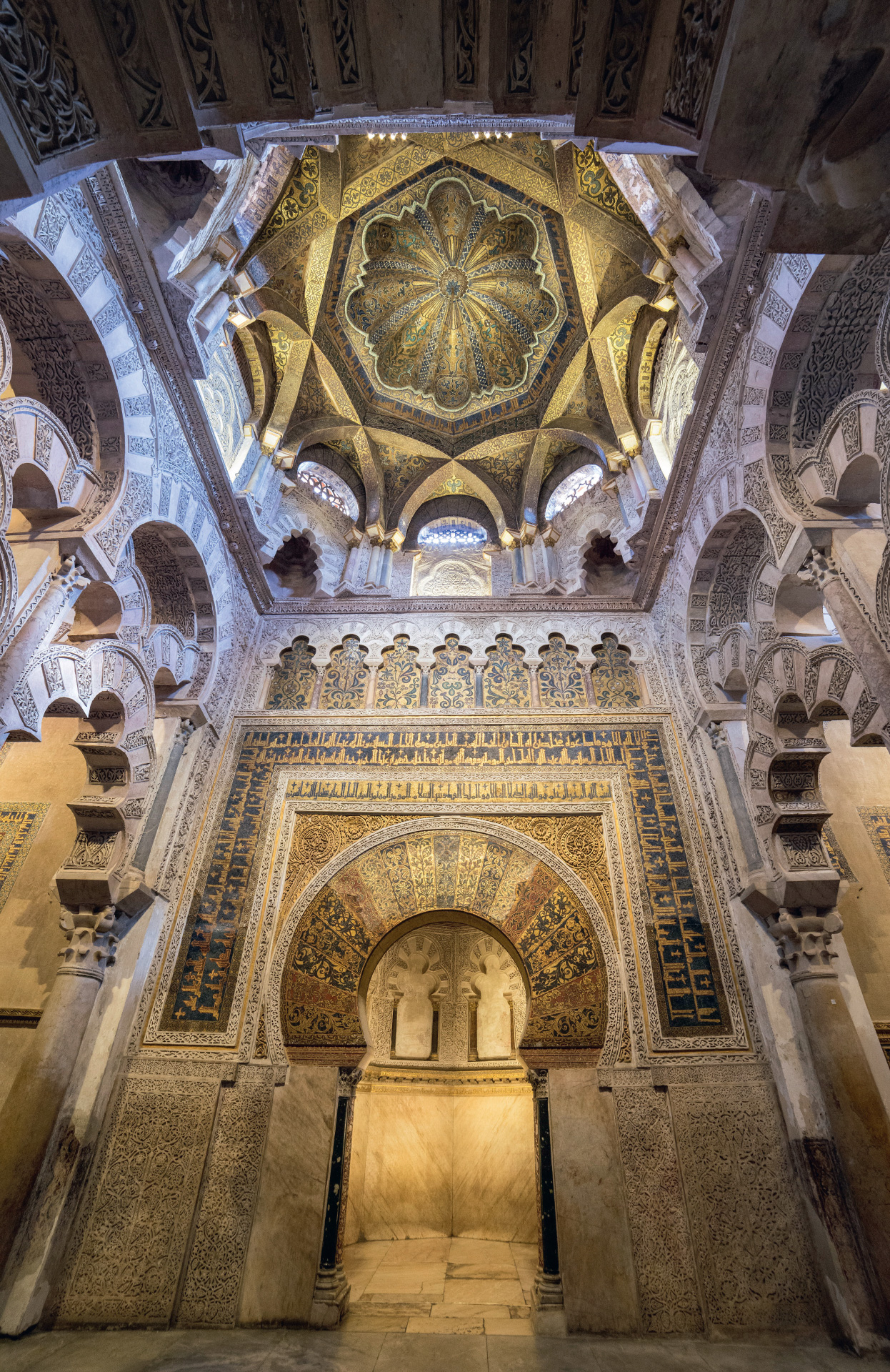Jerusalem, Damascus & Cordoba
1/5
There's no tags or description
Looks like no tags are added yet.
Name | Mastery | Learn | Test | Matching | Spaced |
|---|
No study sessions yet.
6 Terms
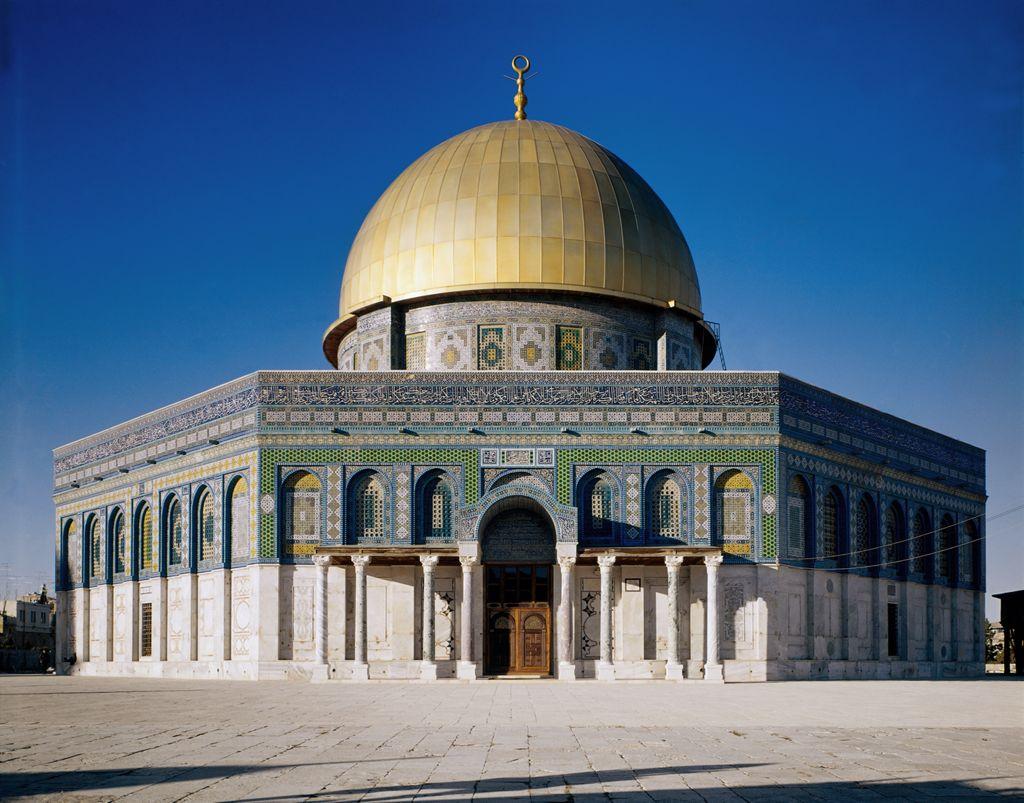
Name - Dome of the Rock
Date - 691-2
Culture - Islamic
OG Location - Jerusalem (Israel)
Function - Art historians agree that this unique monument functioned, at least in part, as a victory symbol, affirming the Islamic Empire’s position as the new and dominant regional power
Patron -
Material - A rock that marks the place where Abraham almost sacrificed his son Isaac, marble columns, glass mosaics featuring gold and inlaid mother-of-pearl.
Other - Named after material used in construction, features a dome over a cylindrical drum, an octogonal plan, Roman arches
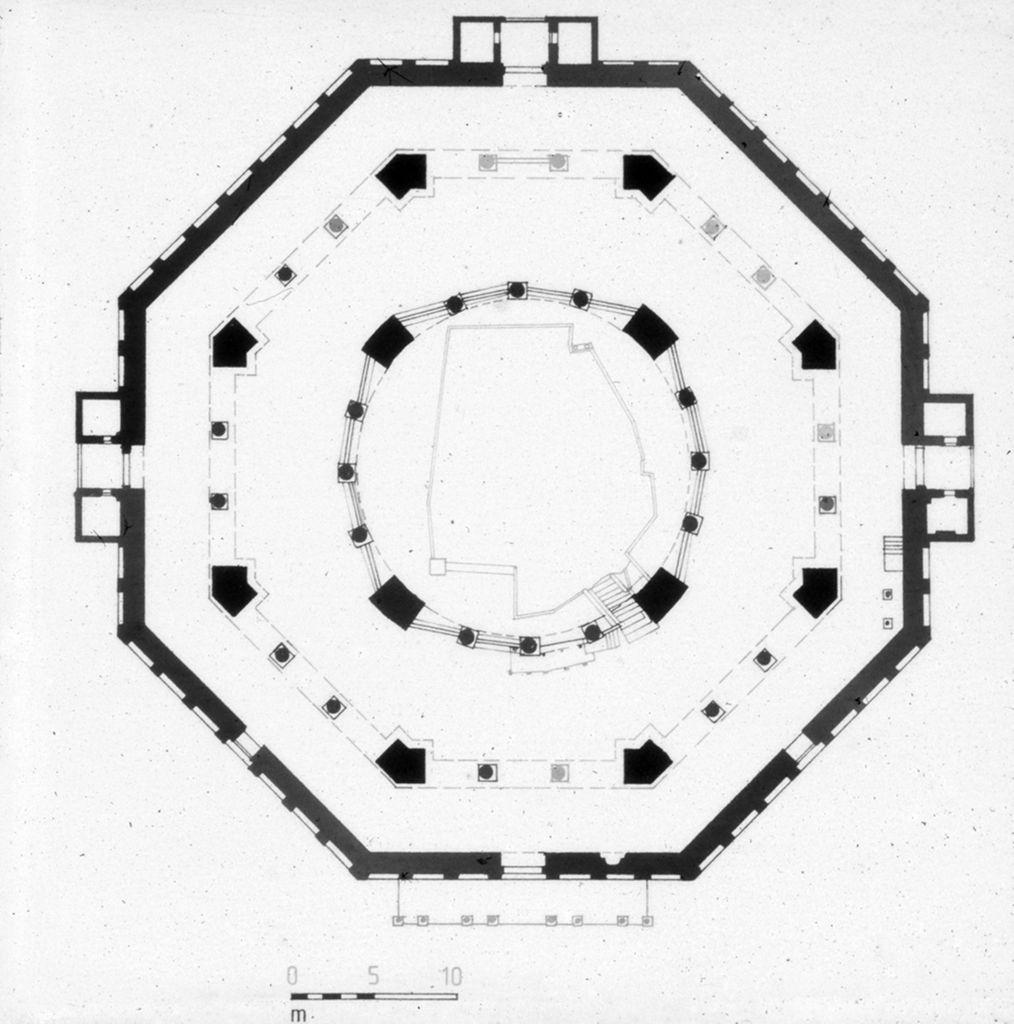
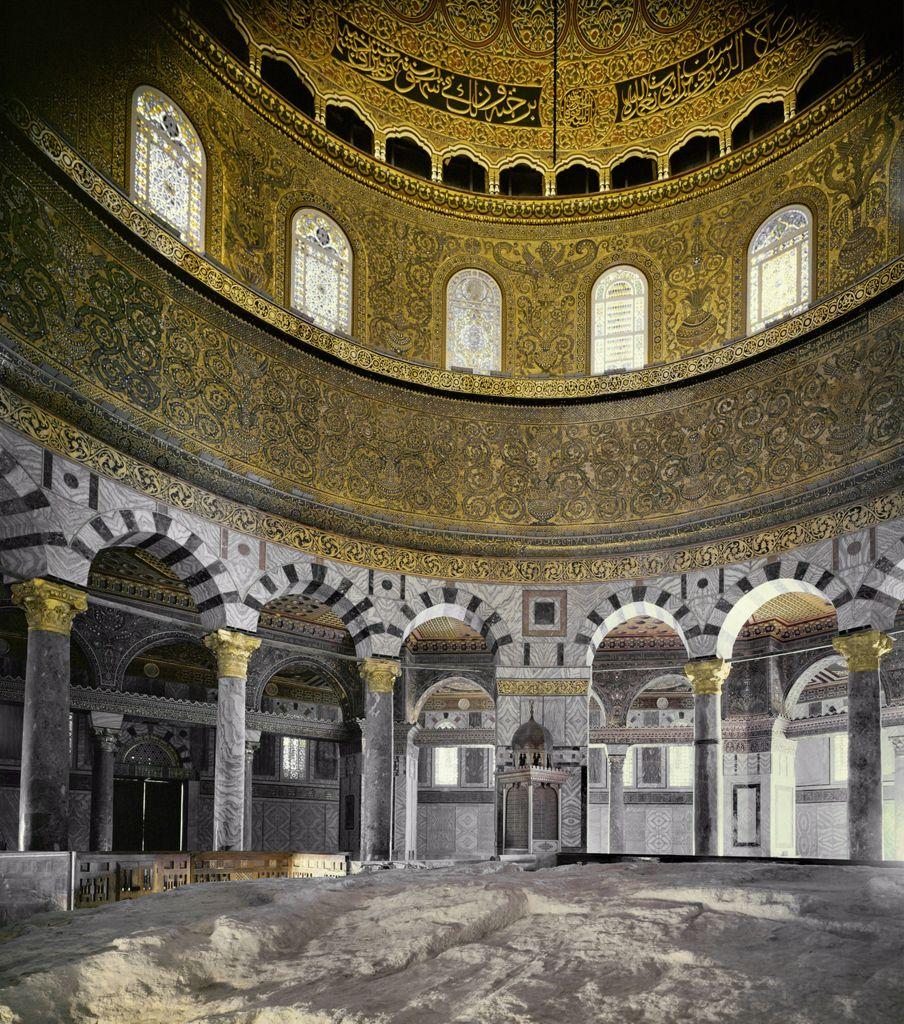
Name - Dome of the Rock Interior
Date -
Culture -
OG Location -
Function -
Patron -
Material -

Name - Great Mosque of Damascus
Date - 715
Culture - Syrian
OG Location - Syria
Function - Meant to represent paradise, Friday mosque and Christian church
Patron - Commissioned in the early eighth century by Caliph al-Walid I (ruled 705–15 CE)
Material - Glass, tile, gold, mother-of-pearl


Name - Great Mosque of Damascus (Mihrab, interior)
Date -
Culture -
OG Location -
Function -
Patron -
Material -
Other - Interior marks the focal point of prayer, features precious stones and mother-of-pearl, Kufic inscriptions, geometric patterns created by the repetition and intersection of basic forms
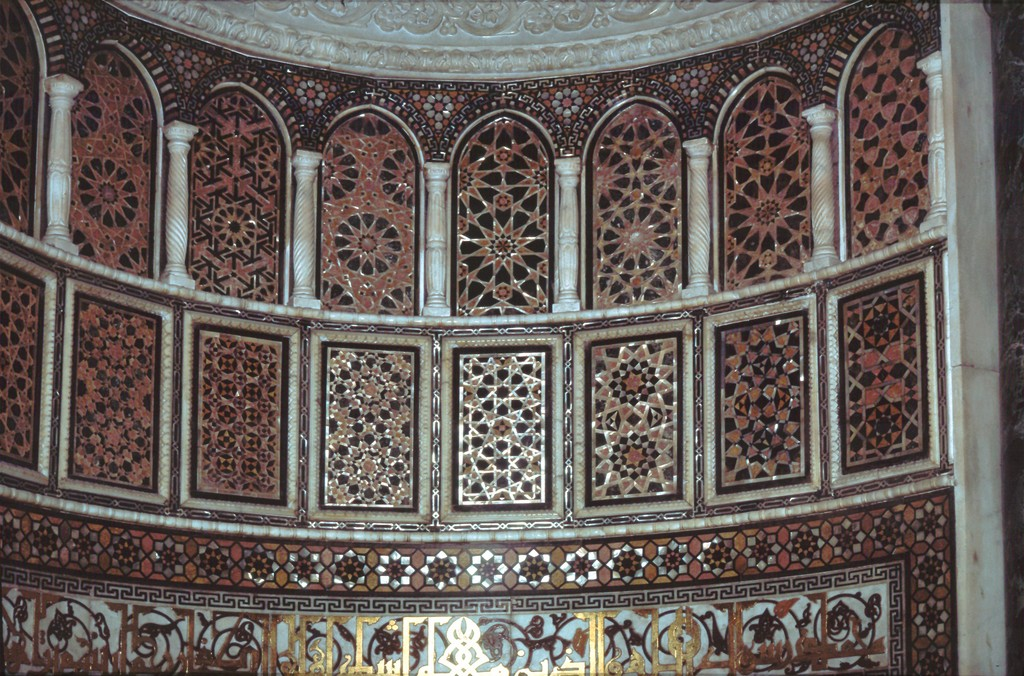

Name - Great Mosque of Cordoba
Date - 785-987
Culture -
OG Location - Spain
Function - Designed for use by royalty and the leader of Muslim worship (imam)
Patron -
Material -
Other - Features horseshoe arches, a hypostyle hall, Corinthian columns and shafts from a previous Christian church at the same site, some of the patterns used here are also featured at the Umayyad palace in Madinat al-Zahra, the horseshoe arches featured here indicate an assimilation from previous Visigothic architecture


Name - Great Mosque of Cordoba (Plan and Maqsura and Mihrab)
Date -
Culture -
OG Location -
Function -
Patron -
Material -
Other - X is maqsura, maqsura was a space reserved for the caliph and his entourage, techniques and design elements associated with early Umayyad rulers in Damascus and Jerusalem, gold Kufic inscriptions framing the opening of the mihrab, multilobed and interlocking stone arches this space is covered by a melon-shaped ribbed dome on an octagonal base
